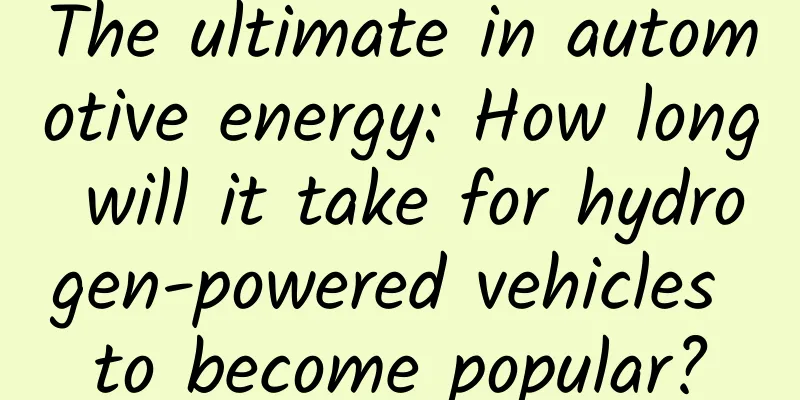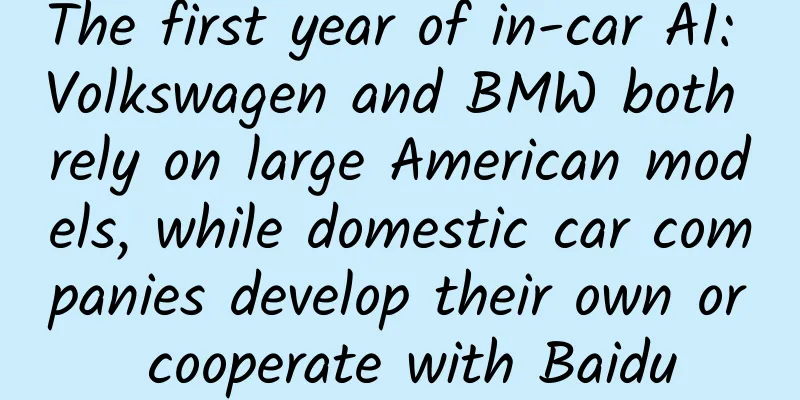The ultimate in automotive energy: How long will it take for hydrogen-powered vehicles to become popular?

|
Today, the "dual carbon" goals of carbon peak and carbon neutrality have become a global consensus and an important strategy for the economic development of many countries. Against this backdrop, the transportation sector, which accounts for the largest carbon emissions in human activities, is a key area that has received much attention and transformation. The development of new energy vehicles has become a popular industry term and an important part of energy transformation. In recent years, the popularity of electric vehicles and the rapid development of fuel cells have stirred up the huge energy transformation. Hydrogen-powered vehicles with "zero emissions" have also begun to enter the public eye. The craze for developing hydrogen energy started in developed countries and regions such as Europe, the United States and Japan. The European Union, the United States and Japan have incorporated hydrogen energy into their national energy development strategies and issued industrial development plans and support policies. China has positioned hydrogen energy as a strategic energy technology, and favorable policies have been gradually released. In 2019, hydrogen energy was written into the government work report for the first time. In 2020, the Energy Law of the People's Republic of China (Draft for Comments) listed hydrogen energy as an energy category for the first time. In the same year, hydrogen energy was included in the annual national economic and social development plan, and the demonstration and promotion of fuel cell vehicles and the preparation of the national hydrogen energy industry development strategy plan were launched. Under a continuously stable policy environment, whether in terms of legislation, top-level design, or specific demonstration applications, the market and industry have provided fertile soil for the sustainable development of hydrogen energy, coordinating, standardizing, and supporting the sustainable development of the hydrogen energy industry in a healthy direction. Known as the "ultimate form" of automotive energy, how is the growth of hydrogen-powered vehicles driven by this wave of enthusiasm? What will be the future? What difficulties will hydrogen-powered vehicles face in the large-scale implementation? Will hydrogen-powered vehicles replace electric vehicles? If you have these confusions and questions, follow BrainPole to take a look and explore the growth path of hydrogen-powered vehicles. Great value but slow to implement The working principle of hydrogen-powered vehicles is not what we think of as converting energy through hydrogen combustion. The power source of hydrogen-powered vehicles is mainly through the chemical reaction of hydrogen fuel cells in the battery stack, which converts chemical energy into electrical energy. The energy conversion method that we think of as the name is also a kind of power technology route for hydrogen-powered vehicles, namely the hydrogen internal combustion engine. Hydrogen internal combustion engines are similar to traditional fuel engines, except that they are driven by highly compressed hydrogen. The principle is to burn hydrogen and convert the combustion energy into kinetic energy to provide power. This route has too many obstacles to implementation due to safety and energy conversion efficiency, and the market is more likely to choose the hydrogen fuel cell route. The hydrogen fuel cell power system seems to be more complex than the hydrogen internal combustion engine system, but it has higher advantages in energy conversion rate, safety and environmental protection. Compared with electric vehicles, hydrogen energy batteries also have the potential to replace some electric vehicles. Compared with electric vehicles, the outstanding advantages of hydrogen energy vehicles are high energy density, short hydrogen refueling time, long driving range and green environmental protection. Take the refueling time for example. We know that a pure electric car needs at least 5 hours of refueling if it is slow charged, and about an hour if it is fast charged. However, the refueling time of a hydrogen energy vehicle is almost the same as that of a traditional fuel vehicle, and the average refueling time is about 6 minutes. Compared with pure electric vehicles, the refueling efficiency of hydrogen energy vehicles is far better than that of electric vehicles. In terms of driving range, hydrogen vehicles are more suitable for medium- and long-distance, medium- and heavy-duty vehicles such as long-distance transport trucks, buses, and logistics vehicles due to their energy density. This is also the main landing area for hydrogen vehicles at present. In the commercial vehicle environment that requires high horsepower, medium- and long-distance, medium- and heavy-duty vehicles, hydrogen heavy trucks have appeared. Some hydrogen heavy trucks have begun to be put into use in cities. In August of this year, the first batch of hydrogen heavy trucks (5 vehicles) of the Rongchengzhonghe self-use hydrogen energy project, the first hydrogen transportation demonstration application scenario in Tianjin, was officially put into operation. In October, the second batch of 10 hydrogen heavy trucks were also put into operation. In addition to heavy trucks, some cities have also put other types of hydrogen vehicles into operation as demonstrations. In Yijinhuoluo Banner, Inner Mongolia, 2 hydrogen buses, 7 hydrogen commercial vehicles, and 10 urban garden sanitation hydrogen garbage trucks were put into operation. In addition, Yijinhuoluo Banner will also put at least 20 hydrogen short-distance transport heavy trucks into operation. In order to ensure the supply of hydrogen fuel, Yijinhuoluo Banner has also planned 28 hydrogen refueling stations, and the site selection work has been completed. On November 12, at the Beijing 2022 Winter Olympics and Paralympics event service vehicle delivery ceremony, Toyota officially delivered 2,200 new energy vehicles to the Beijing Organizing Committee for the Olympic Games, including two hydrogen energy vehicles. In addition, Beiqi Foton hydrogen fuel cell vehicles have also joined the list of official service guarantees for the Winter Olympics. According to the China Society of Automotive Engineers, by 2025, the number of hydrogen-powered vehicles in China will reach 100,000, and by 2035, 1 million. This means that the hydrogen-powered vehicle market will grow more than 10 times in the next three to four years. However, judging from the investment in the entire hydrogen-powered vehicle market, hydrogen-powered vehicles are in the initial stage of development and are developing slowly. According to statistics from relevant agencies, a total of 9,006 hydrogen-powered vehicles were sold worldwide in 2020, including 937 in the United States, 1,177 in China, and 5,823 in South Korea. Statistics from the China Association of Automobile Manufacturers show that from 2016 to 2020, the cumulative sales in China were only 7,100 vehicles. This is far from the conclusion of the China Society of Automotive Engineers that the sales volume will reach 100,000 vehicles by 2025. Although the policy has been actively responded to since 2015, six years have passed, and the development of hydrogen-powered vehicles is as slow as a turtle. The Difficulty of Scale Growth It is understandable that new things in the early stages of development need time to grow, but the situation of hydrogen vehicles seems to be even more difficult. They are also weighed down by the three major mountains of cost, technology, and energy replenishment restrictions. They have embarked on the path of the early stages of electric vehicle development and are highly dependent on subsidies. 1. The cost is too high and the marketization is slow. The cost of hydrogen vehicles not only includes the cost of the whole vehicle, but more importantly, the cost of energy replenishment. Whether it is the cost of hydrogen production or the energy replenishment industry chain such as hydrogen refueling stations, they are all slowly climbing in the early stages of development. For example, the construction cost of a hydrogen refueling station is tens of millions, and it cannot share facilities with traditional gas stations. It needs to be relocated and rebuilt, and the construction cost is three times that of a gas station. As for hydrogen production, the current main source is also obtained from fossil fuels, which are not green. According to data from the China Hydrogen Energy Alliance, coal accounts for 64% of the preparation of hydrogen, industrial by-products account for 21%, and the greenest electrolysis method accounts for only 1%. 2. The industrial chain is long and complex, and there is a lot of room for technology upgrades. Both the fuel cell technology for hydrogen vehicles and the hydrogen preparation technology at the energy replenishment end need to be improved. The fuel cell system of a hydrogen vehicle is equivalent to the engine in a traditional fuel vehicle and is the core component of the entire vehicle. The technical membrane electrode and manufacturing process of the battery fuel stack have difficulties and bottlenecks, which not only limit the fuel conversion rate but are also one of the main factors for the high cost of batteries. As an important energy supplement for battery fuel, the large-scale acquisition technology of green hydrogen is not mature at present. The global electrolysis hydrogen production is in the initial stage and cannot be scaled up. 3. In terms of infrastructure construction, there are few hydrogen refueling stations. According to the data of the China Association of Automobile Manufacturers, as of the end of 2020, the cumulative number of hydrogen refueling stations built in China has just exceeded 110. For vehicles that rely on hydrogen energy replenishment, the large-scale development of the energy replenishment end is one of the prerequisites for the rapid development of hydrogen energy vehicles. Compared with gas stations and charging piles throughout the country, the number of hydrogen refueling stations is almost negligible. The suppression of these three major mountains has caused the sales volume of hydrogen energy vehicles to remain at a low level for a long time, and the pace of marketization has been relatively slow. Drawing on the development path of electric vehicles, the initial development of hydrogen energy vehicles requires continuous investment in energy replenishment and hydrogen fuel cells. Only when the foundation of infrastructure is laid can the house be built layer by layer. At present, the development of hydrogen vehicles is still mainly based on policy subsidies, and heavy trucks for long-distance transportation have also begun to be put into operation. The development of passenger cars still needs time and market preparation. Relatively speaking, fixed long-distance routes are much more friendly to the construction cost of hydrogen stations. Hydrogen heavy trucks can be used as a supplement to long-distance transportation capacity along these fixed routes. Of course, in order to realize the large-scale use of hydrogen vehicles, costs, technology and infrastructure construction need to be promoted simultaneously, and it will take time to break through the various industrial chains. Will hydrogen cars replace electric cars? In the long term, we know that hydrogen-powered vehicles will eventually develop with the continuous development of policies, strategies and industries. Will hydrogen-powered vehicles replace electric vehicles in the future? Regarding this question, although from the ultimate development perspective of energy consumption, zero emissions is the ultimate goal. The strategic position of hydrogen-powered vehicles is very high, but in the short term, the development of electric vehicles has far surpassed hydrogen-powered vehicles, and the goal of replacing electric vehicles seems to be far away. Electric vehicles have replaced the application scenarios of traditional fuel vehicles in cities. Whether it is passenger cars, public transportation, exclusive vehicles, etc., electric vehicles are integrated into all aspects of urban transportation. However, in long-distance transportation scenarios, pure electric vehicles have limited range and need to be recharged multiple times, which increases the difficulty of operation. For electric vehicles in this field, no matter how the technology develops in the future, they are limited by the performance ceiling of lithium battery materials and limited range. This has also become an opening for hydrogen energy vehicles to enter the development as a supplement to new energy vehicles in long-distance transportation scenarios. The development of hydrogen energy vehicles and electric vehicles is not a relationship of who replaces who, but a complementary relationship in different application scenarios. We know that in the development of new energy vehicles, policies have always been the first, whether as a guide and strategic planning, or real money to support the development of the industry. For hydrogen energy vehicles, the new policy has also made changes in subsidies that are different from electric vehicles. For example, it is result-oriented, and bonuses can only be obtained after project evaluation and acceptance; it is clear that bonuses cannot be used for vehicle project investment and hydrogen refueling station construction, but can only be used for core technology industrialization, talent introduction, new models and new technologies demonstration application promotion, etc. These new measures have become more stringent and detailed to avoid the previous phenomenon of fraud in electric vehicles. With the guidance of policies and strategies, and the deepening of industry and technology, the development of hydrogen energy vehicles is slow for the time being, but it will not stagnate. Just like the development of electric vehicles, after the brewing of time and technology, it will also bear sweet fruits. In particular, the advantages of hydrogen energy vehicles in energy efficiency and environmental protection will help transportation achieve deep decarbonization and achieve the goal of "carbon neutrality by 2060" in the context of energy development and emission restrictions. Whether it is the energy conservation and environmental protection of the digital economy and digital infrastructure itself, low-carbon emission reduction, or the upgrading of the energy system in the transportation field, they are all extremely important components of energy transformation. In this system, hydrogen energy vehicles have unlimited future development and imagination space, and will become the main development direction and application form of future transportation. |
<<: Success! China-Europe Mars Probe Conducts On-Orbit Relay Communication Test
>>: Keep pace with "food" and overcome swallowing obstacles
Recommend
Taobao Live Competitive Product Analysis and Optimization Strategy
In recent years, the integration of live streamin...
It’s been 10 years! This is the first code of WeChat
WeChat was officially released on January 21, 201...
Guan Lixin's lecture video on "New Profit Model"
Course catalog: ├──001. 【Internet Innovation】Let t...
Where do the "wanderers" in the universe come from? It's related to this "tidal bridge" | Science and Technology Weekly
Compiled by Zhou Shuyi and Pingsheng Aspirin may ...
After 10 years of climbing mountains and crossing rivers, it was finally proved that this fruit originated in China
Yunnan, Hubei, Hunan, Guangxi, Guangdong, Jiangxi...
It's outrageous: I'm 165cm tall and weigh 80kg, but I have fatty liver...
During the physical examination at the end of the...
Cargo Ship: Please don’t just call me “the courier”
Not long ago, my country used the Long March 7 ca...
The ability to “fall asleep as soon as you want” that everyone desires could actually be a disease?
When it comes to sleep, most people probably want...
Today, call 81192 again!
"Call 81192 The decks are clear, the airspac...
Does a brand website need to add the website name in the title of each web page?
Does a brand website need to add the website name...
Owl: I am a “round owl”, not a “Yuanxiao”!
As we all know, the symbol of the Lantern Festiva...
Eat until you are 70% full: In addition to helping you lose weight, it is also a secret to anti-aging
After returning from the Spring Festival holiday,...
Understand ASO in 3 minutes! Those who are new to operations and promotions, please look here!
This article is 1,300 words long and is recommend...
Will operators dominate the smart router market?
Abstract: Although communication operators have i...
Weilai announced the successful tape-out of its 5nm chip. Why didn’t Huawei and BYD actively promote the same thing?
Will China's new energy vehicles be strangled...









